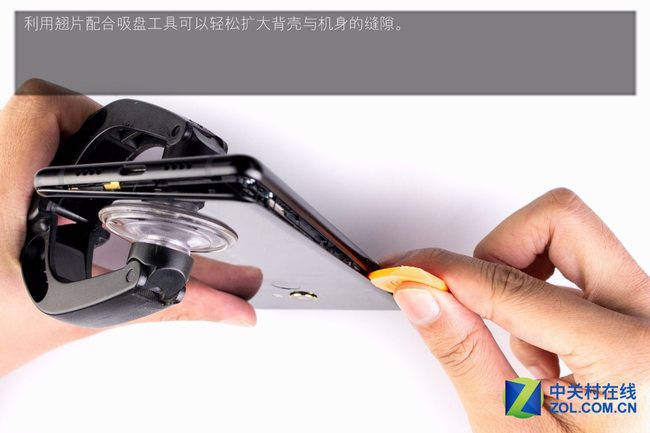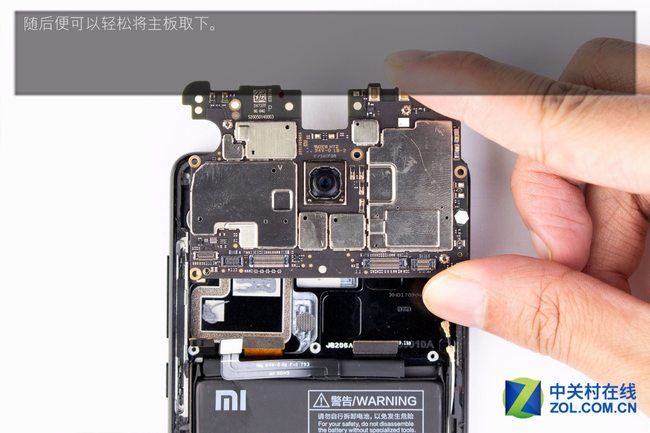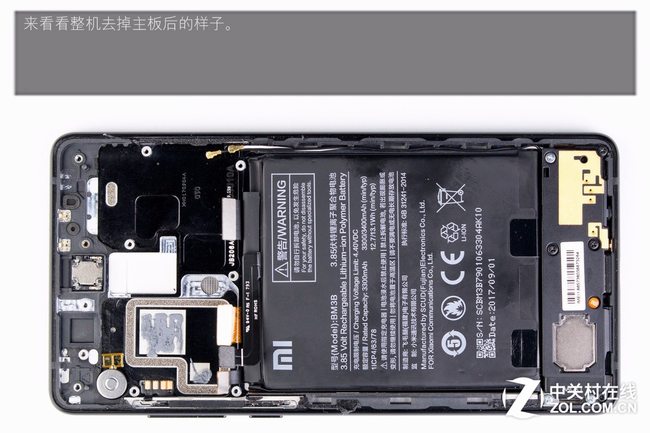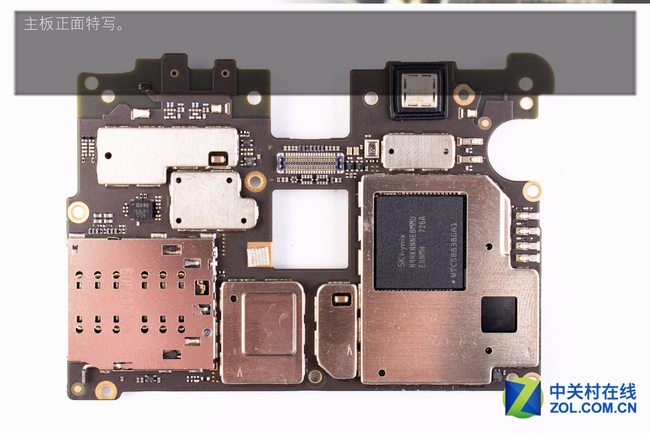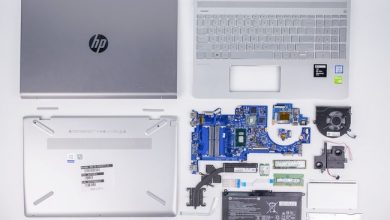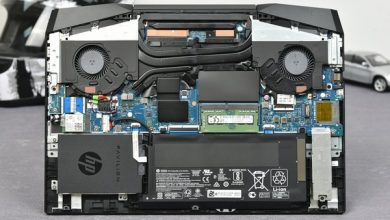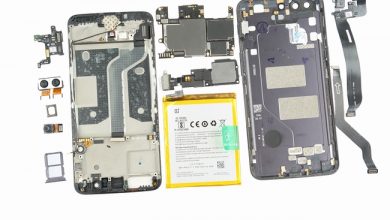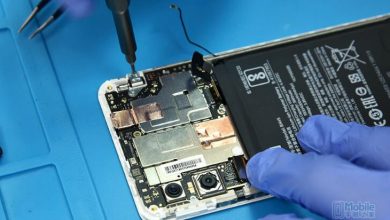As one of the best-selling smartphones on the market, the Xiaomi Mi MIX 2 has made many improvements in its internal design and materials. The phone’s teardown is not difficult. Now, let’s start the teardown on the Mi MIX 2.
Teardown is what we do! Follow us on Facebook for the latest repair news.
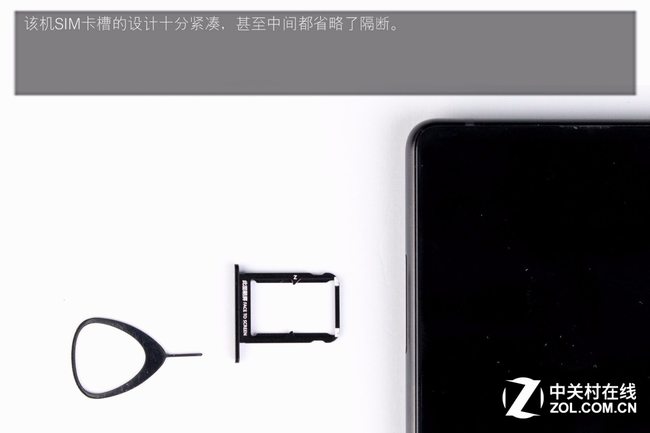
The phone’s SIM card tray design is in a quite tight layout, and no particles can be found in the SIM card tray.
Utilize the pick and suction cup to expand the seam between the back case and the body.
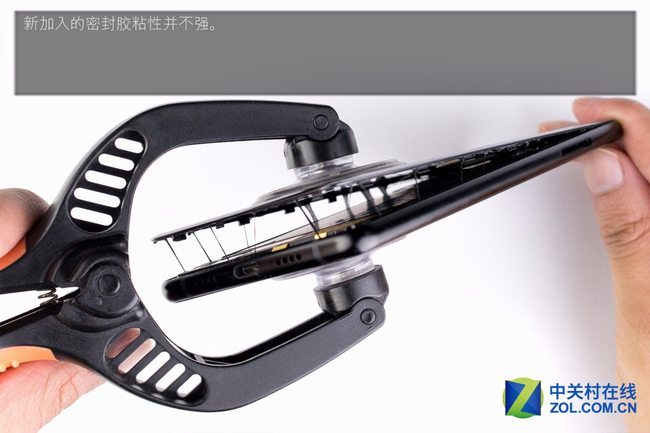
The newly added sealant doesn’t have good viscosity.
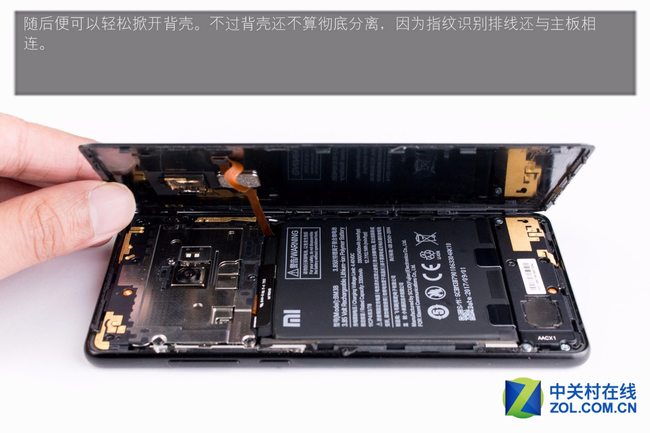
Then open the back case. But the back case can’t be completely separated from the phone because the ribbon wire of the fingerprint reader is still connected to the motherboard.
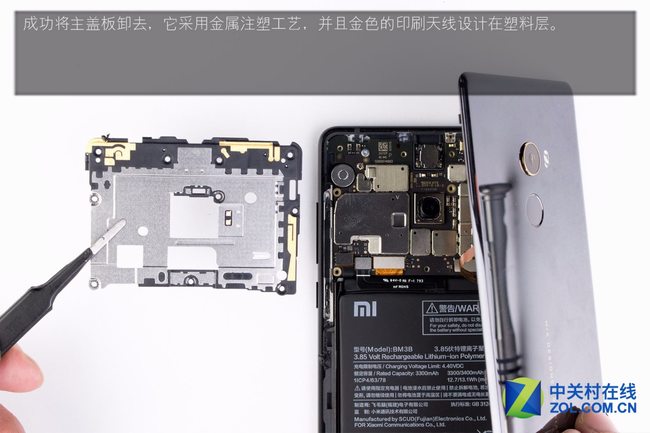
The main cover has been removed successfully. It adopts a metal injection molding process, and the gold-printed antenna has been designed into the plastic layer.
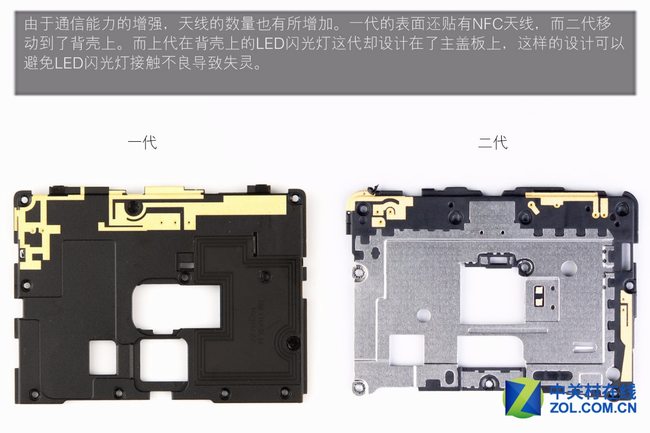
The number of antennas has increased owing to the enhancement of communication capability. Xiaomi Mi MIX’s surface is covered with an NFC antenna, while the Xiaomi Mi MIX 2’s NFC antenna has been removed from the back case. The LED flash that the Xiaomi Mi MIX adopts on the back has been designed into the Mi MIX 2’s main cover. In this way, LED flash failure resulting from poor contact can be avoided.
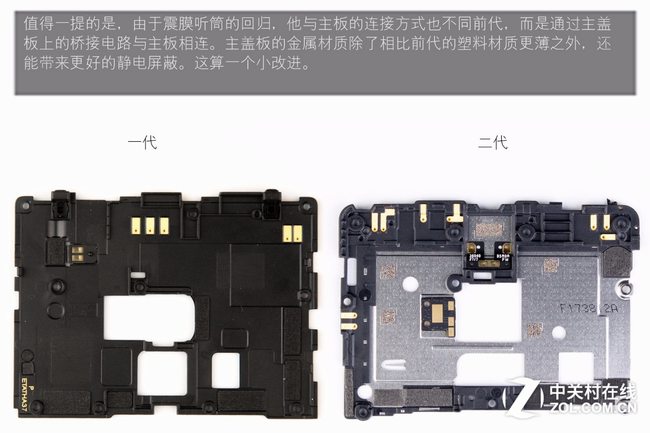
The Xiaomi Mi MIX 2’s connection method to the motherboard is different from that of its predecessor because of the vibrating earphones. It connects to the motherboard via a bridge circuit on the main cover. The metal material the MIX 2’s main cover adopts is thinner than the plastic material MIX features. With such a design, the phone can bring better electrostatic shielding.
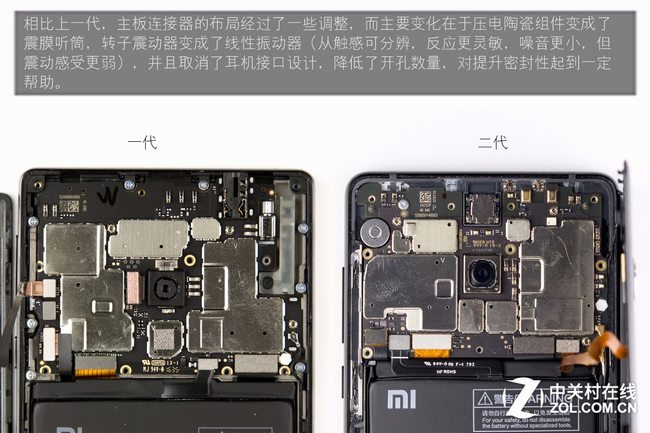
Compared with its last generation, the MIX 2 has made some adjustments to the motherboard connector’s layout. The main changes include that the phone has replaced piezoelectric ceramic components with vibrating earphones, and the liner vibrator has superseded the rotor vibrator. Compared with the rotor vibrator, the linear vibrator acts with a swifter response and creates lower noise. The phone has a canceled earphone port, which can improve the sealing effect.
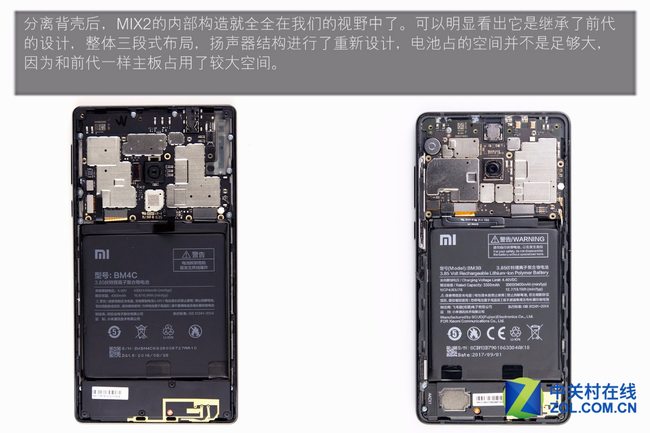
After removing the back case, the MIX 2’s internal design can be seen. Obviously, the phone continues the MIX’s design and adopts a three-stage layout. It has a new design for the speaker structure. The battery doesn’t take up much space, as the motherboard does.

The MIX 2 continues the MIX’s design on the back. However, it adds a double-sided tap around the phone not only to avoid the MIX’s loose problem but also to improve the sealing effect. Personally speaking, if the phone’s back adopts a curved surface design like the Note series, there will be great improvements in both ergonomics and appearance.
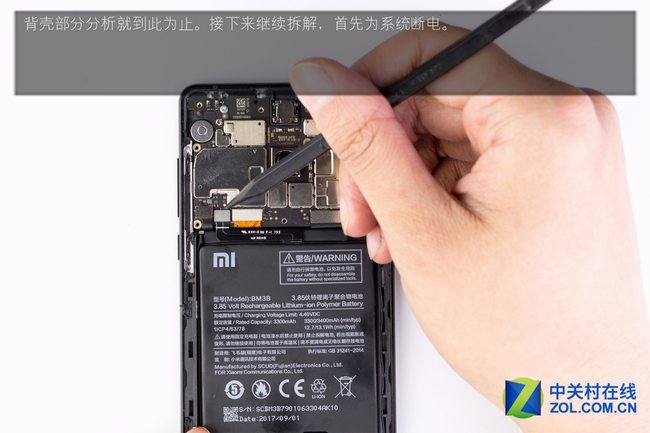
The analysis on the back case is over. Power the system off first before continuing the teardown.
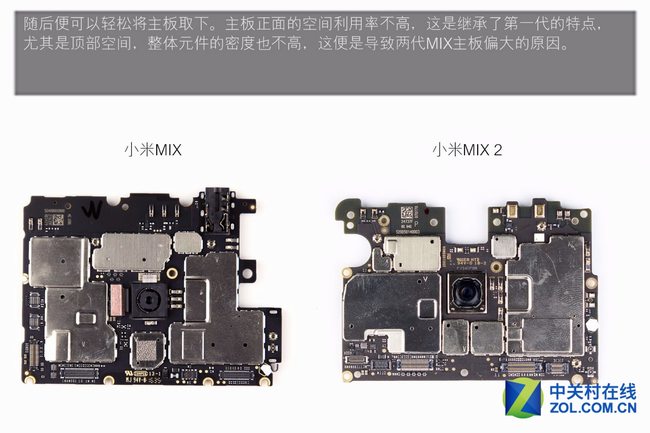
The motherboard has a low utilization of space on its front part. The component density is low, which is why the two phones have large motherboards.
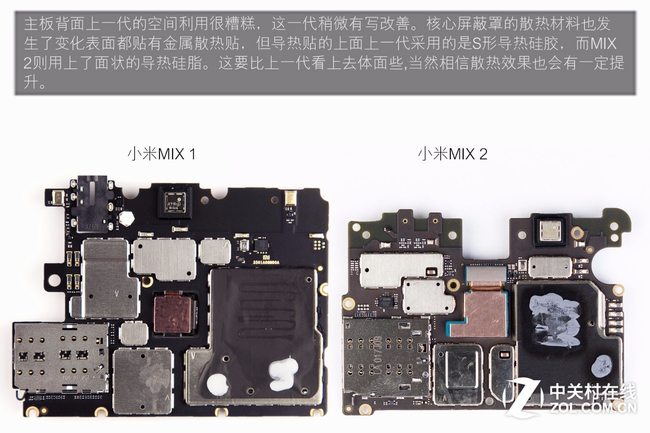
The MIX’s utilization of the motherboard’s space is a mess, while the MIX 2 has slightly improved on it. The material for cooling on the shielding case is covered with a metal cooling paste. The MIX adopts S-shaped thermal silica on the thermal conductive paste, while the MIX 2 uses thermal silica gel. With such a change, the MIX 2 has a certain improvement in the heat dissipation effect.
Here is the whole device without the motherboard.
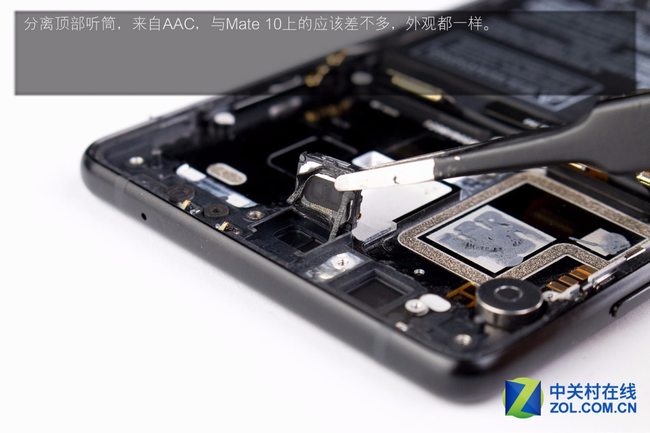
Take out the earphones on the top. The earphones look the same as the Mate 10’s.
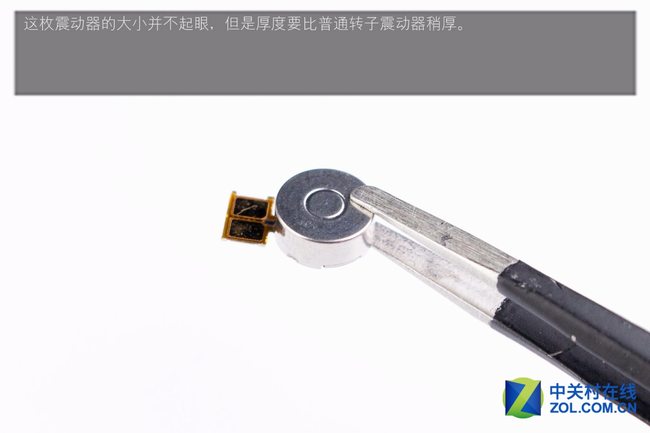
This vibrator is not big but thicker than a common rotor vibrator.
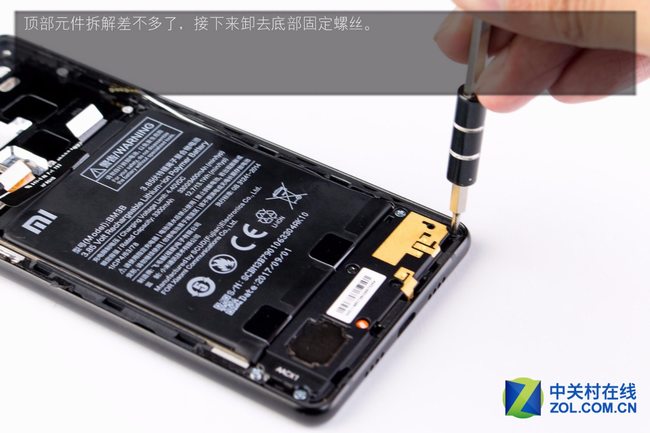
The teardown of the top components is basically over. Now, remove the fixed screws at the bottom.
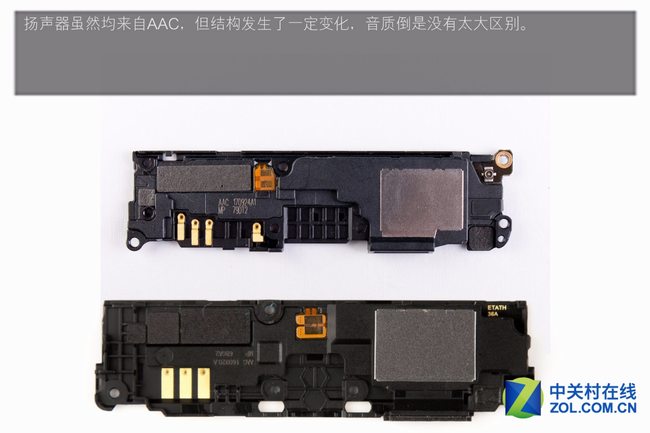
Although the two phones’ loudspeakers are from AAC, the MIX 2’s loudspeaker has made some changes in its structure. But there is no big difference between their sound qualities.
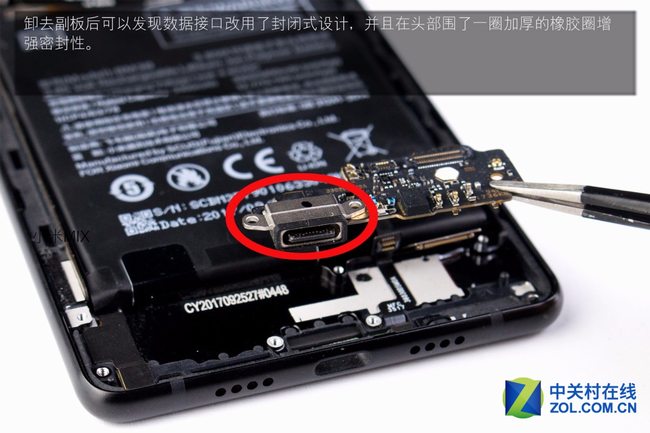
Remove the deputy board. We can find that the data port has adopted a sealing design, and its front part is covered with a thick rubber ring, which aims to enhance the sealing effect.
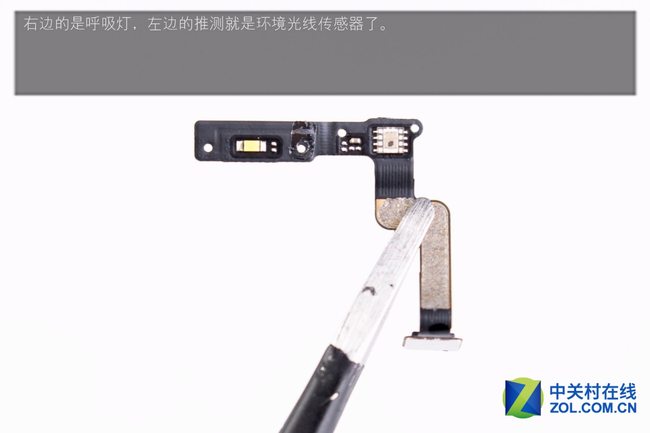
The LED indicator is on the right, and the ambient light sensor is supposed to be on the left.
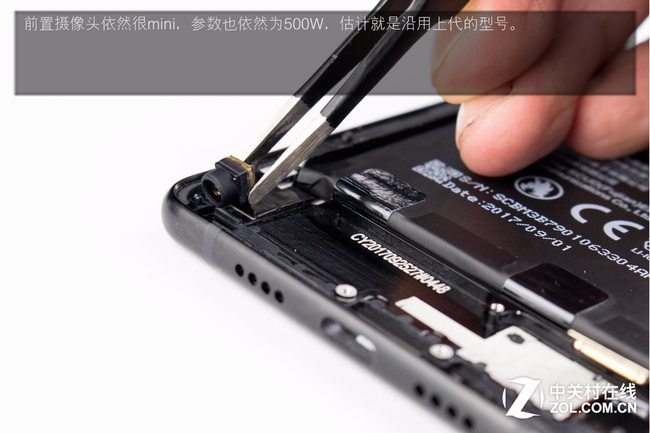
The front camera is mini and has a parameter of 500W.
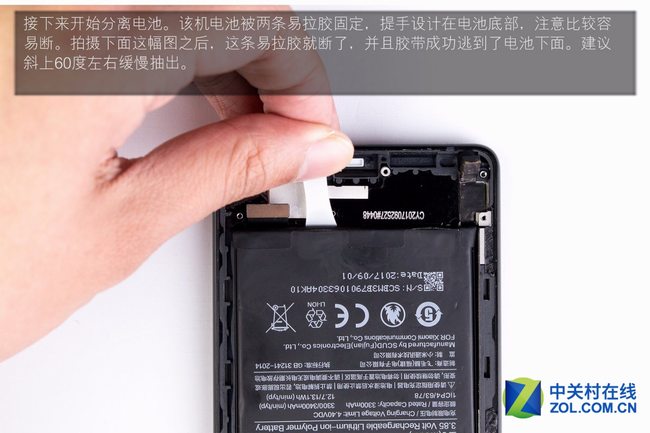
Then, remove the battery. The battery is fixed by two easy-to-pull stickers. The sticker is easy to break. After we take the picture, the sticker gets broken, and it drops under the battery. I suggest pulling out the sticker slowly at a slant of 60 degrees upward.
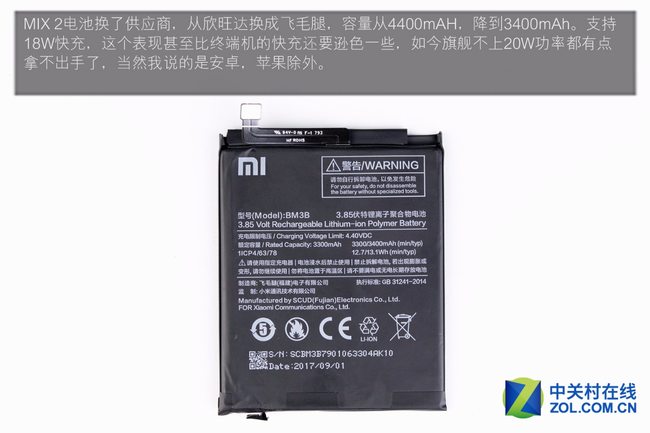
The MIX 2 battery is supplied by SCUD. Its capacity is 3,400mAh, while the MIX has a 4,00mAh battery. It supports 18W fast charging, which is far from the standard that the terminal device’s fast charging reaches. After all, current flagships feature a battery that supports over 20W fast charging. Of course, I refer to Android phones, excluding iPhones.
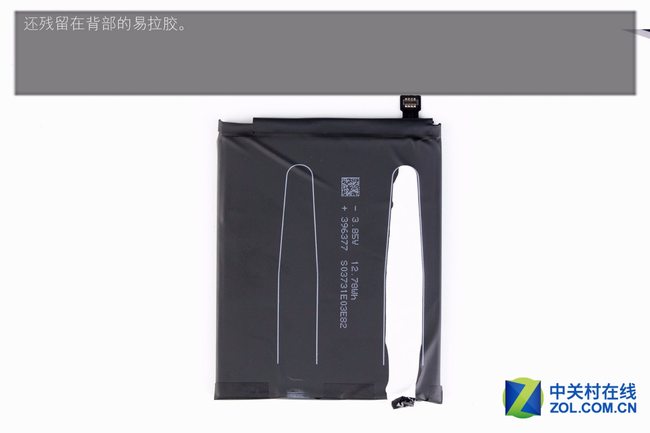
The easy-to-pull sticker still remains on the back.
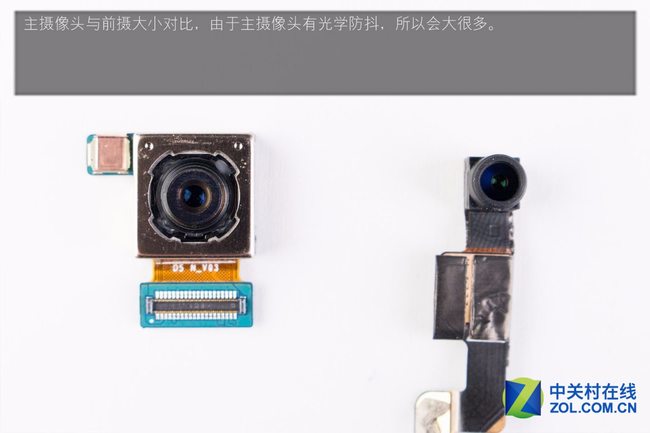
There is the main camera and the front camera. The main camera is much bigger than the front camera since it supports the OIS function.
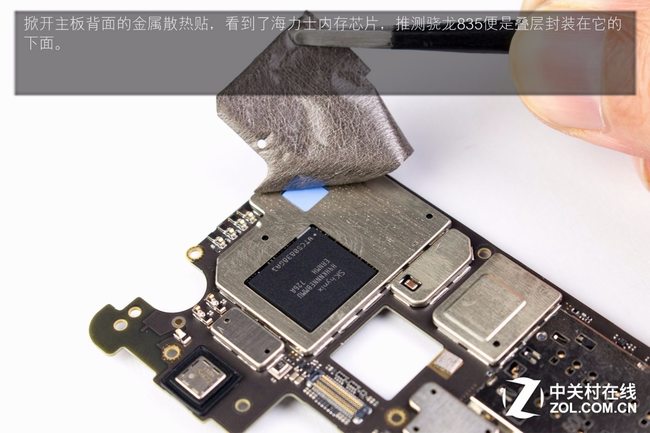
After removing the metal heat dissipation paste from the motherboard’s back, the Hynix memory chip can be seen. The Snapdragon 835 chip is placed under it.
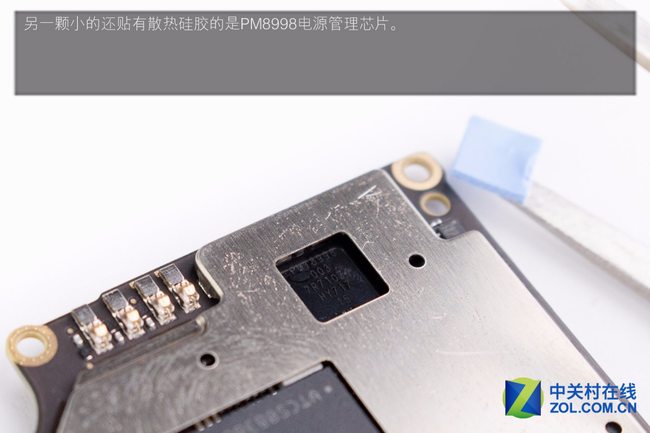
The other small one with thermal silica is the PM8998 power management chip.
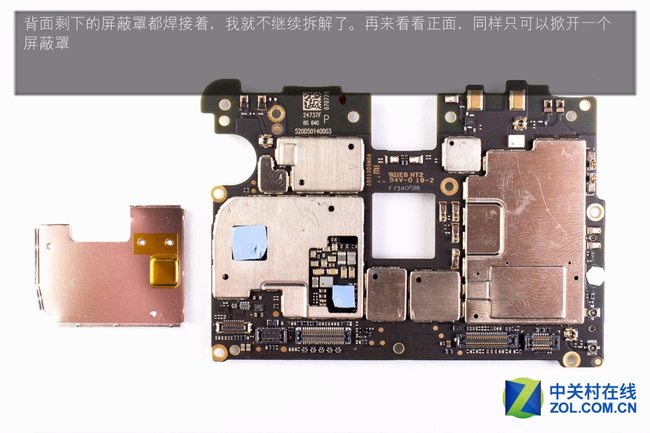
What was left on the back was the welding shielding case, so I stopped the teardown on the back. Now, let’s look at its front part. I can only remove a shielding case.


